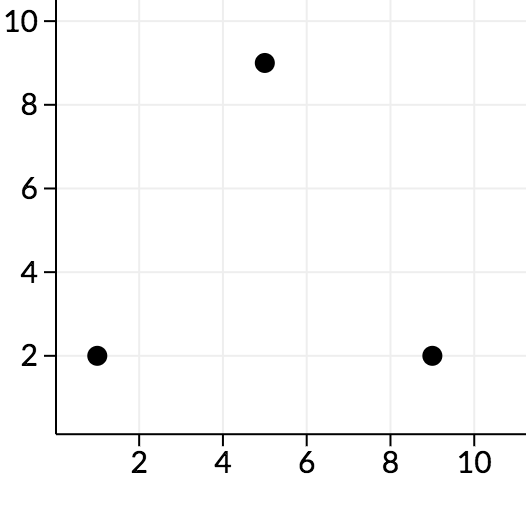Five Dimensional Points
题意翻译
给你五维空间中的 $n$ 个点. 这些点被从 $1$ 到 $n$ 标号. 没有两点重合.
定义一个点 $A$ 是坏的, 当且仅当存在另外两个不同的点 $B$ 和 $C$, 使得向量 $AB$ 和向量 $AC$ 的夹角是锐角. 否则, 这个点 $A$ 就是好的.
输出这n个点中,哪些点是好的.
可以通过点积判断向量的夹角.
题目描述
You are given set of $ n $ points in 5-dimensional space. The points are labeled from $ 1 $ to $ n $ . No two points coincide.
We will call point $ a $ bad if there are different points $ b $ and $ c $ , not equal to $ a $ , from the given set such that angle between vectors  and  is acute (i.e. strictly less than ). Otherwise, the point is called good.
The angle between vectors  and  in 5-dimensional space is defined as , where  is the scalar product and  is length of .
Given the list of points, print the indices of the good points in ascending order.
输入输出格式
输入格式
The first line of input contains a single integer $ n $ ( $ 1<=n<=10^{3} $ ) — the number of points.
The next $ n $ lines of input contain five integers $ a_{i},b_{i},c_{i},d_{i},e_{i} $ ( $ |a_{i}|,|b_{i}|,|c_{i}|,|d_{i}|,|e_{i}|<=10^{3} $ ) — the coordinates of the i-th point. All points are distinct.
输出格式
First, print a single integer $ k $ — the number of good points.
Then, print $ k $ integers, each on their own line — the indices of the good points in ascending order.
输入输出样例
输入样例 #1
6
0 0 0 0 0
1 0 0 0 0
0 1 0 0 0
0 0 1 0 0
0 0 0 1 0
0 0 0 0 1
输出样例 #1
1
1
输入样例 #2
3
0 0 1 2 0
0 0 9 2 0
0 0 5 9 0
输出样例 #2
0
说明
In the first sample, the first point forms exactly a  angle with all other pairs of points, so it is good.
In the second sample, along the cd plane, we can see the points look as follows:

We can see that all angles here are acute, so no points are good.